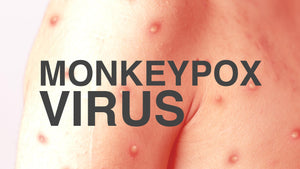
World AIDS Day
According to the World Health Organisation, in 2019 nearly 38,000,000 were living with HIV. Almost 35 million people have lost their lives to HIV/AIDS since the condition was first discovered. World AIDS Day has been commemorated since 1988 as a day that recognizes the immense contribution of the medical community in its efforts to prevent and treat those infected and in solidarity with the HIV/AIDS community itself. It is one of the 9 days that WHO member states commemorate as global public health days. Despite the greater awareness and availability of antiretroviral treatment, there is a greater need to unite and combat this disease which has become a public health threat.
History of World AIDS Day
Several cases of AIDS were first reported by the gay community and among those who injected drugs in the 1980s. Initially called gay-related immune deficiency (or GRID), this immune deficiency disorder was first called AIDS in 1982 by the CDC of the USA. Towards the end of 1986, nearly 85 countries (from every region in the world) had reported AIDS cases to the WHO and a clearer understanding of the condition emerged. At this time there were 38,401 cases reported to the WHO. This number exploded in the decades to come and by 1993 there were about 2.5 million cases of AIDS worldwide. International AIDS Day was first observed in 1988 and HIV/AIDS testing commenced in 1992.
World AIDS Day 2020
The UNAIDS theme for the World AIDS Day (World HIV Day) observance this year is “Global solidarity, shared responsibility”. This year is dedicated to turning the tide of the HIV/AIDS epidemic and to contain its spread through sustained community awareness and cohesive action. This year has been particularly challenging for the HIV/AIDS communities across the world due to the challenges posed by the COVID-19 pandemic. This has left immunocompromised individuals more vulnerable than ever and has put combating and checking the HIV/AIDS epidemic in the spotlight. Making testing available across the far reaches of the world and also providing the community access to antiretroviral treatment is crucial at this time. The theme also centers on eliminating the stigma against HIV/AIDS and making medical facilities available to those affected.
Preventing HIV/AIDS
HIV transmission occurs through the exchange of bodily fluids. Blood transfusion, use of infected needles, exchange of semen and pre-seminal fluids, and breastmilk are sources of HIV transmission. It is important to create awareness that infections do not occur through contacts such as handshakes, hugs, contact with saliva, urine, or sweat. The greatest risk of transmission occurs during the early weeks of infection when the person infected is unaware of their infection status. A person with a detectable viral load may be a source of transmission even before they start to show symptoms. This makes testing a key element in the prevention of HIV infections. While HIV testing kits and even protection gear are available with popular medical stockists such as Smart Medical Buyer, it is also important for people to be aware of their availability and use.







